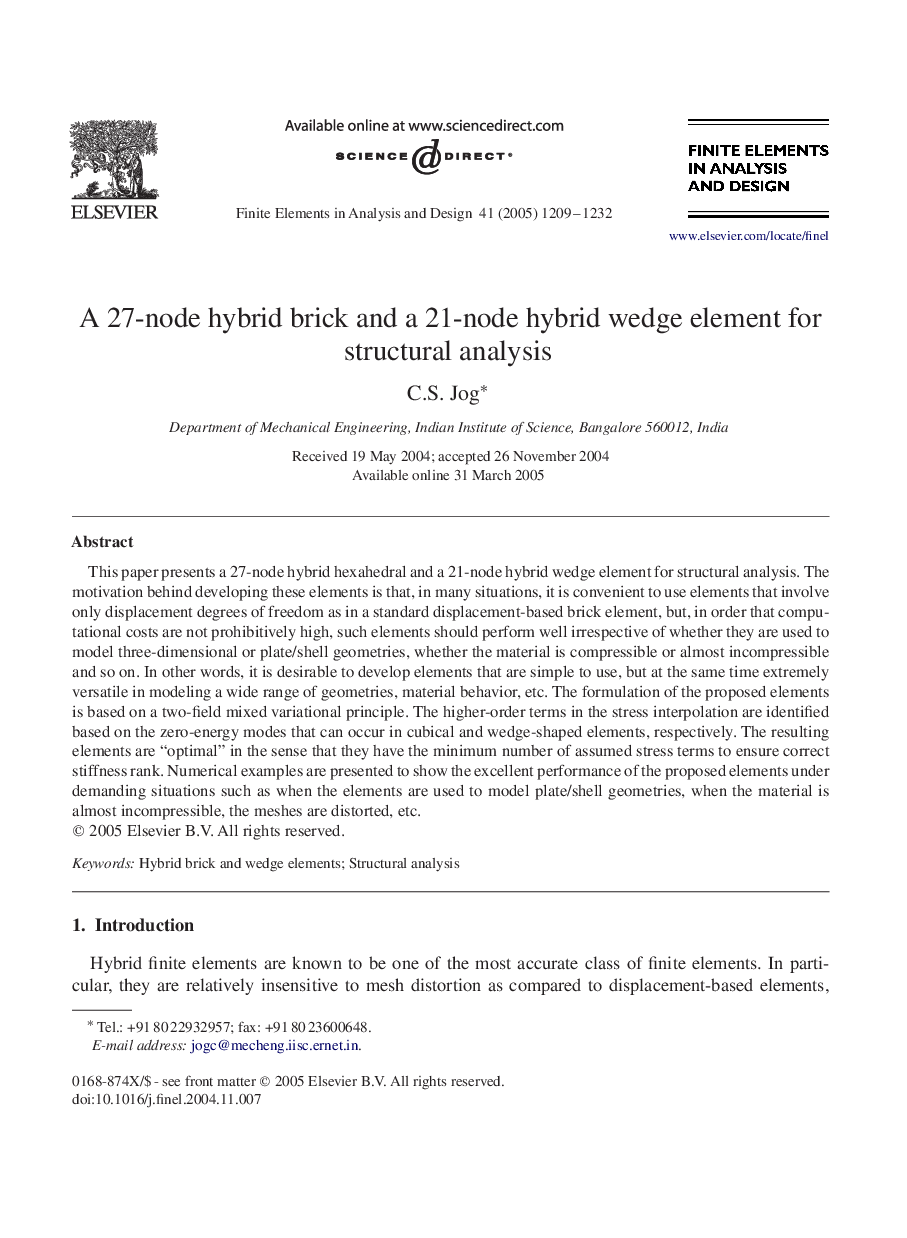| Article ID | Journal | Published Year | Pages | File Type |
|---|---|---|---|---|
| 9668630 | Finite Elements in Analysis and Design | 2005 | 24 Pages |
Abstract
This paper presents a 27-node hybrid hexahedral and a 21-node hybrid wedge element for structural analysis. The motivation behind developing these elements is that, in many situations, it is convenient to use elements that involve only displacement degrees of freedom as in a standard displacement-based brick element, but, in order that computational costs are not prohibitively high, such elements should perform well irrespective of whether they are used to model three-dimensional or plate/shell geometries, whether the material is compressible or almost incompressible and so on. In other words, it is desirable to develop elements that are simple to use, but at the same time extremely versatile in modeling a wide range of geometries, material behavior, etc. The formulation of the proposed elements is based on a two-field mixed variational principle. The higher-order terms in the stress interpolation are identified based on the zero-energy modes that can occur in cubical and wedge-shaped elements, respectively. The resulting elements are “optimal” in the sense that they have the minimum number of assumed stress terms to ensure correct stiffness rank. Numerical examples are presented to show the excellent performance of the proposed elements under demanding situations such as when the elements are used to model plate/shell geometries, when the material is almost incompressible, the meshes are distorted, etc.
Keywords
Related Topics
Physical Sciences and Engineering
Computer Science
Computer Science Applications
Authors
C.S. Jog,
